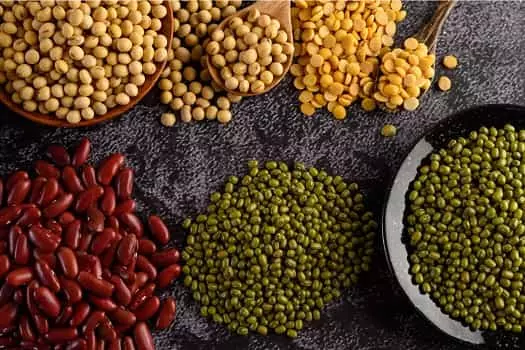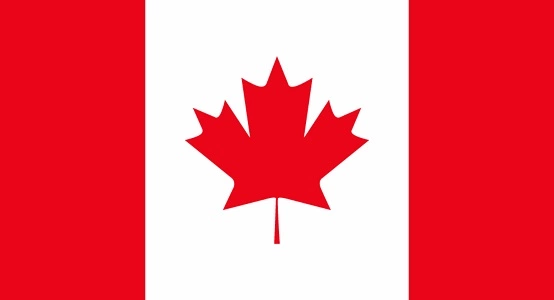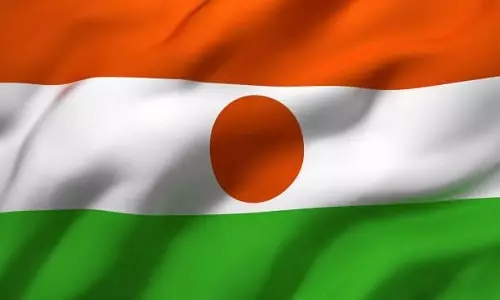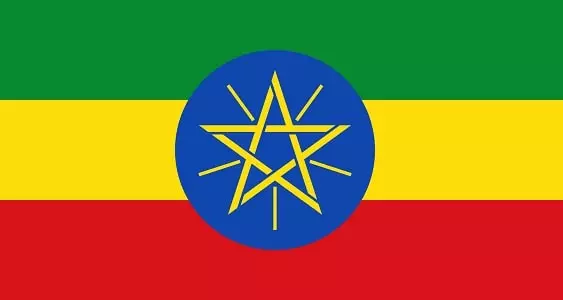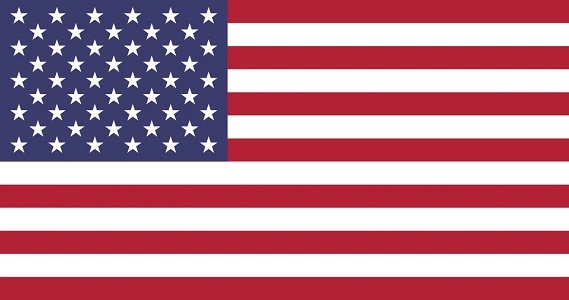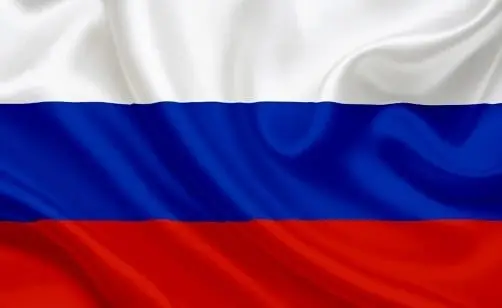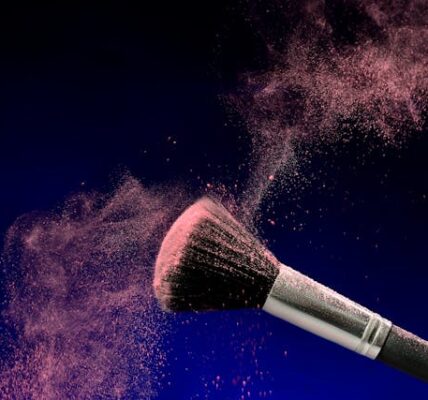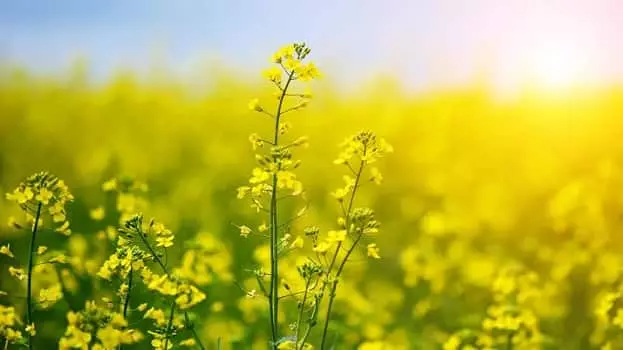It would not be an entirely incorrect statement to argue that pulses are superfoods because they are high in protein, fiber, vitamins, and minerals in general. And if you are here, reading today’s post, you’ve likely consumed or eaten pulses before. Pulses have long been a staple of Indian, Pakistani, Chinese, Egyptian, Nigerian, and even British cuisine. Pulses are the most affordable food items loaded with protein, fiber, and essential vitamins & minerals. That’s the reason why pulses are still popular all across the world. It is proven that pulses are the most sustainable crops to be ever cultivated by humans all around the globe.
As compared to other crops, pulses require very less water to grow, and there’s no need for additional fertilizers. Because pulses feed the soil with nitrogen, the soil automatically becomes suitable for the farming of other crops. In short, pulses are better not just for the platter but for the planet as well. Since there’s a high demand in almost all the countries for pulses, today we will be taking a look at the top 10 largest producers of pulses in the world that are fulfilling the global demand. Let’s dive deep into the statistical data about pulses.
Top 10 Largest Producer Of Pulses In The World
1. India
When it comes to pulses production and consumption, no other nation comes near India. In the last two decades, India more than doubled the production of pulses, whereas the last two decade’s minimum production was recorded in 2002, around 11.13 million metric tonnes. In the current financial year, pulses production is at its peak with a whopping 26.96 million metric tonnes in just one year. Karnataka, Madhya Pradesh, Maharashtra, Rajasthan, and Uttar Pradesh are the biggest pulse-producing states in India. Bengal Gram, Pigeon Peas, Black Eyed Peas, Black Matpe, Green Beans, Chickpeas, Red Kidney Bean, Lentils, and White Peas are produced in huge quantities in India. And if you live in India, chances are, you have already eaten most of these or all of these pulses before.
2. Myanmar
In the year 2020-21, Myanmar exported over 2 million tonnes of pulses to other countries with higher demand for such grains. Well, you’d be surprised to know the total production amount of Myanmar since the acreage-to-production ratio is quite high in this country. From the looks of it, Myanmar is a very small country compared to other large producers, but still, in the year 2021, it managed to produce well over 7 million metric tonnes of pulses. And for the fiscal year 2022, it is estimated that Myanmar would surpass the 7.4 to 7.5 million tonnes mark.
3. Canada
Just a decade ago, Canada’s pulses production amount was way below the 2 million tonnes mark. In fact, in the year 2011, Canada only produced around 1.5 million metric tonnes in one financial year. Since in Canada, there’s a super high demand for pulses, the production rate was increased accordingly by the local farmers. As a result, Canada grew in the overall production of pulses, and now is the 3rd largest pulses producer in the world. The pulses-producing industry is thriving in Canada since the awareness of sustainable foods/crops has skyrocketed in the last few years among the farmers as well as the general population. That’s the reason, last year, Canada produced a whopping 6.7 million metric tonnes of pulses. In the coming five years, if the farming sector continues to thrive, Canada can easily become the 2nd largest pulses producer in the world by pushing back Myanmar to the 3rd rank.
4. China
In the early 1960s, China was the 2nd largest pulses producer in the world, but because of the less harvesting area, the price hikes for pulses, and unfavorable weather conditions resulted in a decline. However, in the last two decades, China’s pulse production is quite steady, where annual production stays anywhere between 4 to 5 million tonnes. Talking about last year’s total production, in 2021, China produced well over 4.5 million tonnes of pulses. Actually, 4.67 million tonnes to be precise. From the looks of it, the communist government of China is producing a controlled amount of pulses every year, but in the future, the production may increase since there’s a high demand for sustainable foods and crops.
5. Nigeria
In the year 2011-12, Nigeria was the 4th largest pulses producer in the world with a huge production amount of 5.3 million tonnes. But over the years, the production has decreased, and if you look at the total pulses production of Nigeria in 2021-22, it is just 3.26 million metric tonnes. However, in the coming years, it seems quite possible that Nigeria will increase the production rate and the acreage for grain cultivation. A good portion of the annual pulses production is exported to foreign countries for profit, which helps grow the overall GDP of the nation.
6. Niger
Nigeria’s neighbor country Niger isn’t very far behind in terms of annual pulses production. According to a statistical report from last year, Niger produced nearly 3 (2.98) million metric tonnes of pulses in 2021. The production amount in Niger may go up by a few percent since the total hectare for grain cultivation has increased in recent 2 years. That’s the reason, Niger may surpass Nigeria, and become the 5th largest pulses producer in the world soon. However, there’s a huge demand for pulses in the local market of Niger, that’s the reason, a huge portion of production is consumed in the nation, but Niger exports a considerable amount to other countries as well.
7. Ethiopia
Countries like Russia, Brazil, the USA, and Ethiopia are producing nearly the same amount of pulses every year. That’s why the lower ranks in this list change every year, for example, last year, Ethiopia was in the 6th spot for pulses production in the world, and because the production dipped a little this year, that’s why it is now on the seventh rank. In 2021-22, Ethiopia produced around 2.8 million metric tonnes of pulses, and around 300 thousand tonnes were exported to other nations to fulfill the demand or contribute to the global supply.
8. Brazil
In the early 2000s, Brazil was the third largest pulses producer in the world, but since other countries like Canada, the USA, Nigeria, China, and Niger increased the production rate for grains, Brazil was pushed down from the top spots. However the notable thing is that Brazil’s production hasn’t declined quite a lot, in fact, Brazil has been producing 2.5 to 3.5 million metric tonnes every year for the last 2 decades. Last year, Brazil produced a whopping 2.7 million metric tonnes in just one fiscal year, which is an insane amount for countries where Iron Ore, Soybeans, and Crude Petroleum are considered the prominent production industries.
9. The USA
Pulses consumption per capita isn’t as considerable in the USA as in other countries like Niger, Nigeria, India, Brazil, UAE, etc. But in the last few years, the demand for grains and pulses has increased among the general population of the USA. And to keep up with such high demand, the USA also has an in-house pulses production industry, which produces over 2 million metric tonnes of pulses every year. Unlike other lower rank countries in this list, the USA has been quite consistent at producing a stable amount of pulses and grains every year. In 2021-22, the USA produced around 2.44 million metric tonnes of pulses.
10. Russia
In the late 1960s, when the USSR existed, it was the 2nd largest pulses producer in the world. But when the USSR collapsed, and Russia emerged in 1991, still the production of grains and pulses was kept steady by the local farmers. However, over the years, the pulses harvesting industry declined slowly in Russia, and now it is the 10th largest pulses producer in the world. There were times when Russia used to export almost half the production amount to the other nations, but in 2022, Russia is heavily sanctioned, and the exports have decreased significantly. Talking about the total pulse production in the year 2021-22, then it was around 2.3 million metric tonnes.
Final Thoughts
The total pulses production in the world is approximately 89.8 million metric tonnes every year, and countries like India, Myanmar, Canada, and Nigeria are steadily increasing the production amount every year to keep up with such high global demand for grains and pulses. Usually, the imports and exports are managed by large producers, and if the production decreases in the top 5 largest producers, for sure, there would be price hikes and a shortage of pulses in the global market.
World Pulses Production FAQs
Q. Why are pulses important?
Ans: Pulses are important because they are a significant source of plant-based protein and are rich in essential nutrients. They also play a crucial role in crop rotation, helping to improve soil fertility and reduce the need for synthetic fertilizers.
Q. Where are pulses grown around the world?
Ans: Pulses are grown in many countries, but the top producers include India, Canada, Myanmar, China, Brazil, and the United States. They are cultivated in both developed and developing nations.
Q. What is the global production of pulses?
Ans: Global pulse production varies from year to year, but it is estimated to be over 90 million metric tons annually. The exact production numbers can be obtained from agricultural statistics agencies and organizations like the Food and Agriculture Organization (FAO) of the United Nations.
Q. What factors influence pulse production?
Ans: Several factors influence pulse production, including weather conditions, soil quality, pest and disease pressures, government policies, and market demand. Pulses are particularly sensitive to weather conditions, and drought or excessive rainfall can have a significant impact on yields.
Q. What are the most commonly grown pulses worldwide?
Ans: The most commonly grown pulses globally include chickpeas, lentils, common beans, pigeon peas, and field peas. These are staple crops in many diets and are used for various culinary purposes.
Q. Are pulses a sustainable crop to grow?
Ans: Yes, pulses are considered a sustainable crop due to their ability to fix nitrogen in the soil, which reduces the need for synthetic fertilizers. They also help improve soil structure and reduce erosion. Additionally, they require less water compared to some other crops.
Q. How are pulses consumed in different cultures?
Ans: Pulses are consumed in various ways worldwide. They are a significant part of traditional diets in many cultures and are used in soups, stews, salads, curries, and as a side dish. They can also be ground into flours for making bread and other baked goods.
Q. What are some challenges in pulse production?
Ans: Challenges in pulse production include susceptibility to diseases and pests, market price fluctuations, and climate change impacts, such as extreme weather events. Storage and post-harvest management are also significant concerns.
Q. Are there efforts to increase pulse production and consumption?
Ans: Yes, there are global initiatives to promote pulse production and consumption due to their nutritional and environmental benefits. These initiatives often focus on research, education, and policy support to encourage farmers and consumers to embrace pulses as a sustainable food source.

